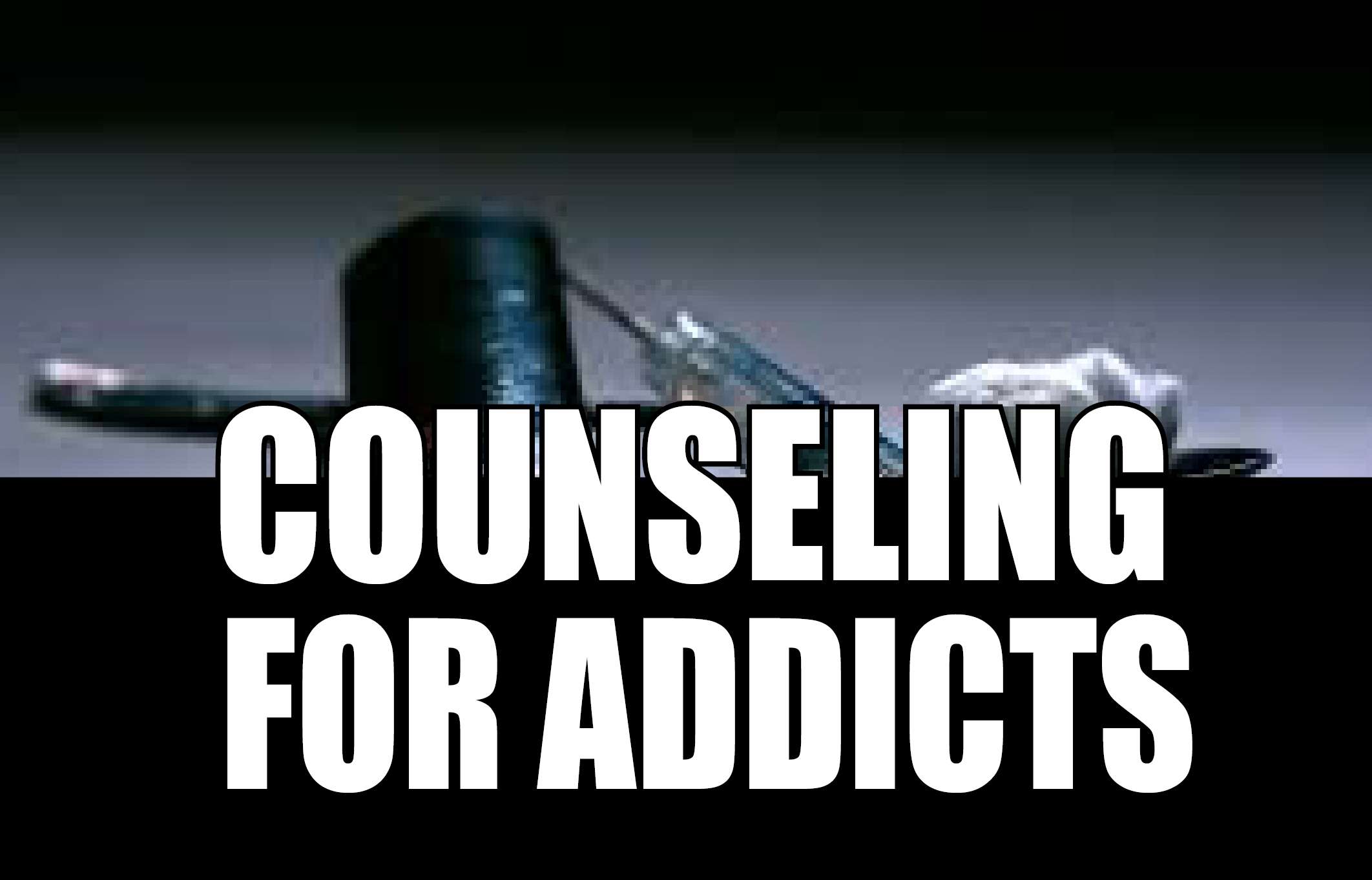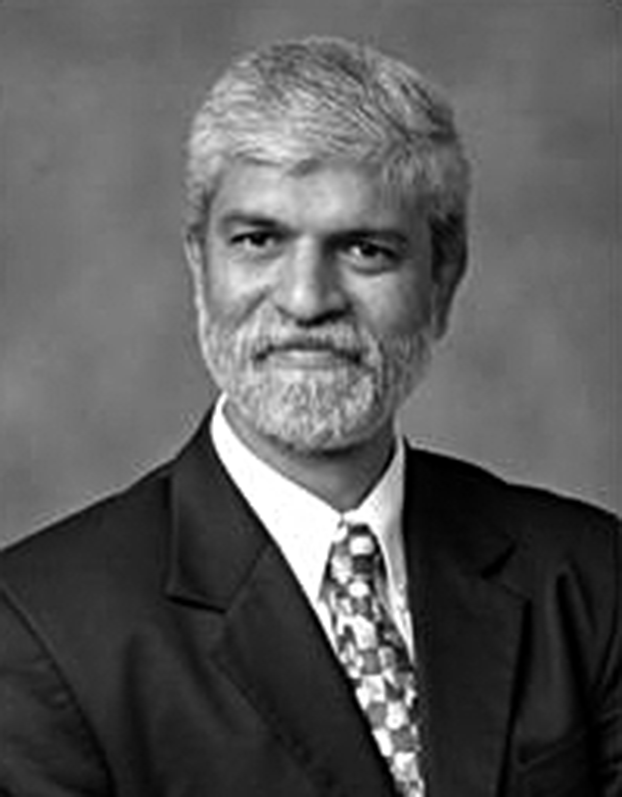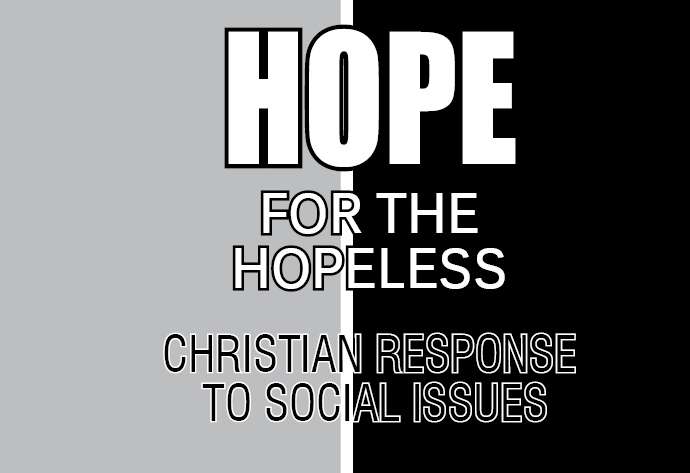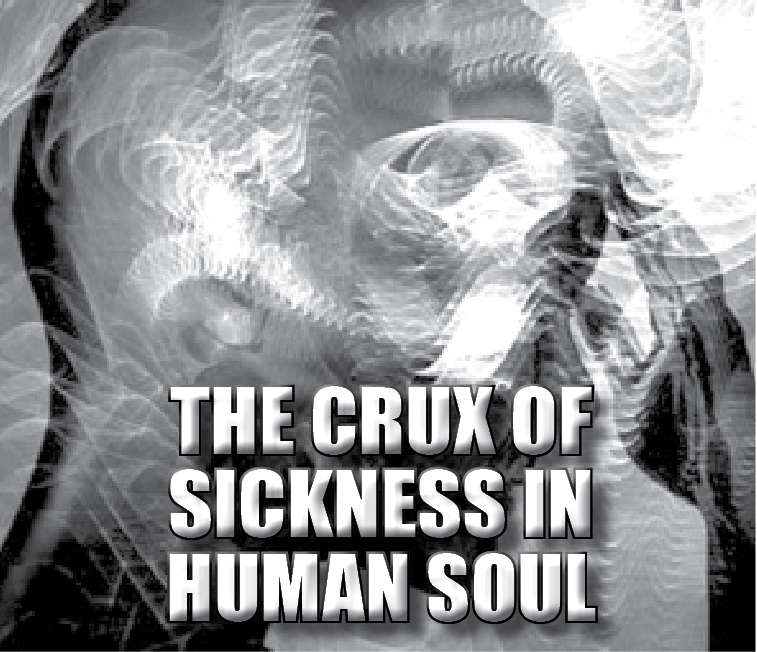

Counseling for Addicts
Dr. Samson Gandhi
“I do not understand what I do. For what I want to do I do not do, but what I hate to do.” - Romans 7: 15
At some level we are all ‘addicts’. In that we are weak and are unable to control our behaviors and give in to undesirable habits. As counsellors, we must be compassionate towards those who are struggling to overcome despite your ourbest efforts.
Addicts have hope. In Christ, they have more than a fighting chance to overcome their addictions. Some have been spiritually healed and have been set free from their addictions. A few others found sobriety through healing retreats and counselling. Quite a few take the medical route for overcoming their addiction. However, one must be careful after being set free. As the saying goes, “Once an addict, always an addict.” What it means is that if people are not careful in ensuring safe behaviors and positive thought patterns there is every chance of a relapse. In John 5:14, Jesus warns the man healed at Bethesda that if he does not stop sinning something worse may happen to him. We do not know what his sinful behavior was but it had to stop. All forms of addictions are sinful as we all know that they are not right, not good and not safe yet we do them (James 4:17).
Many addicts feel as if they do not have a choice in their behaviors. They feel that they have lost the power to make a choice. They slowly believe that they are driven by the substance they are abusing or behavior they are indulging. The freewill given by God can never be lost. Therefore, a counsellor must always remind, reiterate and nurture this fact and encourage the recovering addict to exercise his power of choice to say ‘No’ to the substance or content and say ‘Yes’ to God and godly options.
Many addicts seek help after trying several ways to overcome their habit. As withdrawal from addictive behaviors always gives rise to pain - physical and emotional - it becomes difficult to overcome their addiction. They give in quickly. In order to overcome such pain, addicts must go through detoxification - both physiologically and mentally. During this time their body and mind adjusts to the pain, and experience a freedom from the urge to take to the habit. Therefore, counselling is best done in tandem with detoxification and rehabilitation.
All the basic concepts, principles and skills of counselling are applicable in addiction counselling. The counsellor needs to have a thorough understanding of the various aspects of addiction in order to understand the clients. Addicts normally play various games and the counsellor must be mindful of them. While counselling the family, issues of codependency need to be considered. Family Systems approach to offering therapy understanding and counselling addicted persons and their family members. 12 Step approach is very popular and used extensively in Alcoholics Anonymous groups. Motivational Interviewing is effective when the addict wants to overcome but is unable to give up due to lack of motivation.
Motivational Interviewing
Motivational interviewing is a user-centered style of interaction that directs people to explore and resolve their ambivalence about their substance use and move through the stages of change. It was developed by Miller and Rollick.
In treating addiction, the biggest challenge is to motivate the counsellee to reduce or stop their substance abuse. Without this the counsellor can do little. Earlier motivation was seen as the user's responsibility. Today however motivation is seen as something that can be influenced by the counsellor. Treatment is based on the following assumptions about motivation.
* Motivation is a key to change.
* Motivation may fluctuate from one time or situation to another. This is also known as ambivalence.
* Motivation is influenced by social interactions.
* Each person has powerful potential for change. The task of the counsellor is to release that potential.
Stages of Changes Model: Assessing the readiness to change
This model was developed by two social scientists (Prochaska &Diclemente), and may be used to explain the different decision-making stages that we tend to go through when trying to make a significant lifestyle change. Understanding the change process helps counsellors interact with persons to effectively resolve ambivalence and build motivation. In each stage, the user needs to focus on specific tasks that will enable movement to the next stage. The model includes the following stages of change
Stage 1: Pre-contemplation
The user does not consider change. He tends to defend his current use and does not feel it is a problem. He may be defensive when other people try to get him to quit. He has no concerns about the consequences of his addiction. He is not interested in any kind of help. They seek treatment due to outside pressures such as family, job, etc., or due to legal and/or medical concerns. Teenagers are generally in this stage and some people may be stuck here for years.
There are many reasons to be in pre-contemplation, and Dr. DiClemente has referred to them as “the Four Rs” -reluctance, rebellion, resignation and rationalization.
Individuals in this stage benefit from encouragement to rethink their behaviours; education about the risks and potential shortand longterm consequences of use; and assistance in conducting self-analysis.
Stage 2: Contemplation
At this stage the user has become aware that there are problems associated with his addiction, has begun to think about the issue, but he is not yet ready to deal with it. The consequences are not yet so bad or serious that he feels the need to take action; and the person feels that getting control of the situation is just too hard. The user is highly ambivalent about change. He both considers change and rejects it. Although they think about the negative aspects of their addictive behaviour and the positives associated with giving it up (or reducing), they still cannot make a decision to change as they see change as giving up an enjoyed behaviour. During this stage, individuals wrestle with perceived barriers to treatment and recovery, including time, expense, hassle, and fear.Counsellors can help in making a risk-reward analysis. This is done by helping an addict to look at the effect of such a change on me and others, and how he feels about himself and how will others feel about me. Counsellors can help users discuss a difference between "Where I am now in my life?" and "Where would I like to be?"
Stage 3: Preparation
At this stage, the user shifts from "thinking about it" to "planning first steps." He plans to make a change in the near future but is still considering what to do. He is beginning to try things such as going to AA, looking at the options, and making a plan to stop or cut down. The preparation stage is perhaps the most important in the process. The goal is to help user to get ready to make a change.
Individuals in this stage benefit from writing down their goals, preparing a realistic plan of action, and making a list of motivating statements. Counsellors help the individual to make a realistic assessment of the level of difficulty involved in stopping use. They will begin to anticipate problems and pitfalls and come up with concrete solutions that will become part of their ongoing treatment plan. Commitment to change without a proper plan or appropriate skills or without necessary support in place decreases the chances of long term success.
The user indicates readiness when he stops arguing or denying; asks questions about how to change; states openness to change ("I have to do something) or expresses optimism ("I can beat this").
Stage 4: Action
At this stage the individual puts his plan into action and begins to see it work over time, making adjustments along the way. He is involved in, and committed to the change process. He is willing to follow suggested strategies and activities to change. The many things that addiction may have taken from the person begins to be restored, along with hope and self-confidence and continued determination not to continue addictive behaviour. He often makes a public commitment or tells his family and friends about his decision. This helps him obtain the support he needs to recover and it also creates external monitors. Counsellors can help by affirming any positive action taken toward recovery; help reinforcing their goals and plan of action; acknowledge difficulties and Identify risky situations and formulate coping strategies.
Stage 5: Maintenance
Those in this stage are learning to incorporate their new behaviours into their long-term identities, goals, and activities. There is a long-term sustained change over many years. However the possibility of relapse is always present. Individuals may experience a strong temptation to use drugs or indulge in addictive behaviour.At this stage the person uses 'relapse prevention' strategies to ensure new behaviours are maintained.Strategies in this stage might include: On-going counselling; attending a support group such as AA; avoiding friends they used to "use" with; self-esteem building processes and finding replacement activities.
Stage 6: Relapse
This could be a process of learning to cope with a "slip" to prevent it turning into a full-blown relapse. Few people are able to get on top of substance abuse or dependence without a "slip", where they start using again. Users who relapse learn from the relapse. The experience of relapsing and returning to sobriety often strengthens a person’s determination to stay sober. In the process new skills are learnt which then become part of the user's relapse prevention strategy.
Basic principles that underlie motivational interviewing:
1. Expressing empathy by listening and reflecting the person’s concerns, thoughts and feelings. People with addictions are often reluctant to go into treatment, because they don't believe that the counsellor, will understand why the addictive behaviour means so much to them. Many, who have put up with other people criticising their behaviour, believe they will be judged, some even feel guilty about their behaviour and feel judgment would be valid. Instead of judging the person with the addiction, the counsellor focuses on understanding the situation from the addicted person's point of view.
2. Develop Discrepancy: Helping people make up their minds
Users are usually uncertain about whether or not they want to change. Their addiction may have had consequences yet they have developed their addiction as a way of coping with life, and they do not necessarily like the idea of giving that up. People are more likely to be motivated to change their substance use behaviour when they recognise the discrepancy between their substance use and related problems, and the way they would like their lives to be. Motivational Interviewing helps people to make up their minds about how to move forward, by helping the individual to look at the advantages and disadvantages of different choices and actions. Counsellors can ask the person to list the positive aspects (reasons not to change) and less‐than‐positive aspects (reasons to change) of substance use, and work with the person to establish goals and actions based on the individual's own needs, wishes, goals, values and strengths.
3. Roll with Resistance: Developing New Understanding
Motivational Interviewing as an approach recognises that change does not always happen easily or just because the individual wants it. It is natural for the person to change their mind many times about whether they want to give up their addiction. They may argue, interrupt, blame, ignore or be hostile. Rather than challenging, opposing or criticising the person with the addiction, the counsellor can help the individual to reach a new understanding of themselves and what their addiction means to them. They do this by active listening and reflection to avoid increasing their resistance and re-framing. Some strategies for deflecting resistance include simple reflection, shifting focus, agreement with a twist and reframing.
4. Supporting self-efficacy
Self-efficacy is the person’s confidence in their own ability to achieve their goals. Many users do not believe they can begin or maintain a behavioural change. The counsellor must recognize the user’s strengths and believe in their capacity to reach their goals. Highlighting even small gains can help (e.g. a user might not have stopped drinking but may have managed to cut down or have had one or two alcohol free days in the week.) counsellors promote self-efficacy by validating “change talk.”
Phase 1: Building motivation for change
There are five specific methods that are used in Phase One. The first four methods create the acronym OARS and the fifth method, eliciting change talk is unique to motivational interviewing
Open Questions
Affirming
Reflecting
Summarizing
And Eliciting change talk
Open Questions
Asking open questions encourages the user do most of the talking with the opportunity to reveal their own concerns about their behaviour. This helps build a richer, deeper conversation unlike closed ended questions that resemble an interrogation. Examples:
“What makes you think that you may need to make a change in your drug use?”“What brought you here today?”
Affirming the user
You should also seek opportunities to affirm, compliment, and reinforce the user sincerely. Such affirmations can be beneficial in a number of ways, including:(1) strengthening the working relationship, (2) enhancing the attitude of self-responsibility and empowerment, (3) reinforcing effort and self-motivational statements, and (4) supporting user self-esteem.
Reflective Listening
Reflections convey empathy and are important in MI. You need to listen carefully to what the user is saying and reflect it back to him in a slightly modified or reframed way. Reflection helps to:
* Encourage users to talk and express themselves better
* Build a working therapeutic relationship
* Understand what the user really means
* Reinforces motivation
Summarise
Summarising is also a good way to begin and end each counselling session and to provide a natural bridge when the user is transitioning between stages of change. A summary that links the user's positive and negative feelings about substance use can facilitate an understanding of initial ambivalence and promote the perception of discrepancy. It helps users consider their own responses and contemplate their own experience. It also gives you and your user an opportunity to notice what might have been overlooked as well as incorrectly stated.
Eliciting self - motivational statements
Engaging the user in the process of change is the fundamental task of motivational interviewing. Rather than convince the user that a transformation is necessary, the counsellor helps the user recognize how life might be better and choose ways to make it so.Direct confrontational statements like “you have to change because you have caused a lot of problems in your family” will only be counterproductive. Rather encourage users to verbalize statements that can be self-motivating. Four types of motivational statements can be seen
* Cognitive recognition of the problem (e.g., "I guess this is more serious than I thought.")
* Affective expression of concern about the perceived problem (e.g., "I'm really worried about what is happening to me.")
* A direct intention to change behaviour (e.g., "I've got to do something about this.")
* Optimism about one's ability to change (e.g., "I know that if I try, I can really do it.")
Asking users to identify the extremes of the problem (e.g., "What are you most concerned about?") helps to enhance their motivation. They may be able to establishing specific goals if they are helped to visualize what they would like for the future.
Phase 2: Strengthening commitment to change uses strategies such as:
The focus here is on strengthening the user’s commitment to change using specific goals and plans. The idea is to get from the user and significant others some ideas and ultimately a plan for what to do about the user's drug use. The plan stems from a shared decision making process which includes: setting goals, considering change options, arriving at the plan and eliciting commitment
a. Setting goals
Start with goals that the user is most eager to make. You can also suggest goals you think are important to user’s welfare such as getting a job. It is important to evaluate the goals: Are they achievable? Ask user to consider consequences for this course of action. Ex: "So what is your goal? What do you think might go wrong with this plan? Consider how the user might go about achieving the goal (possible methods). Ensure the goal seems right, if the user has concerns work on them.
b. Considering Change Options
Present menu of options and help user choose his option. Personal choice enhances motivation. Describe options in language understandable to users. Tell user what each strategy is intended to do, how it works, what is involved, and what to expect, then ask user if they have questions. Ask user to guess what would happen with each alternative and what are the outcomes if nothing is done. User may not choose right approach first time and relapse is normal
c. Arriving at a Plan:
This can be done by helping the user fill a change plan worksheet.
The Change Plan Worksheet (CPW)
This is to be used to help in specifying the user's action plan. Do not start by filling out the CPW. Rather the information needed for the CPW should emerge through the motivational dialogue described above. This information can then be used as a basis for your recapitulation. CPW can include the following leading statements:
The changes I want to make are...
The most important reasons why I want to make these changes are...
The steps I plan to take in changing are...
The ways other people can help me are...
I will know that my plan is working if.
Some things that could interfere with my plan are...
d. Eliciting commitment to change
After you have recapitulated the user's situation, and responded to concerns raised by the user move toward getting a formal commitment to change. The user is to commit verbally to take concrete, planned steps to bring about the needed change. The closing question being: Are you ready, then, to commit yourself to do this?In practice, the strategies you use will depend on your user’s readiness to change, which may fluctuate throughout treatment.Toward the end of the commitment process, it is useful to offer a broad summary of what has transpired. This may include a repetition of the reasons for concern uncovered in the Phase 1 as well as new information developed during Phase 2. Emphasis should be given to the user's self-motivational statements, the role of the significant other, the user's plans for change, and the perceived consequences of changing and not changing. Use the notes on the Change Plan Worksheet as a guide.




